To install the Ring Camera, first download and open the Ring app. Then, follow the on-screen instructions to connect the camera to your Wi-Fi network and place it in your desired location.
Introduction (120 words): Installing a Ring Camera is a straightforward process that allows you to add an extra layer of security to your home. With its user-friendly app and step-by-step instructions, setting up the camera is a breeze. Whether you’re a tech-savvy individual or a beginner, this guide will walk you through the installation process effortlessly.
By following a few simple steps, you can have your Ring Camera up and running in no time. From downloading the app to connecting the camera to your Wi-Fi network, everything will be covered. So let’s dive in and explore how to install the Ring Camera and enhance the safety of your home.
Factors To Consider For Optimal Placement
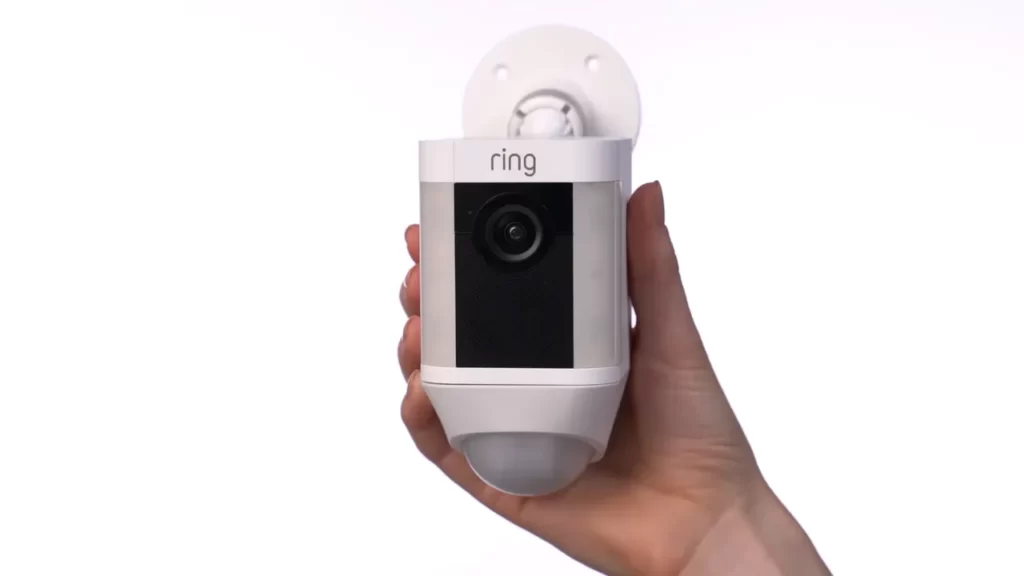
Installing the Ring Camera in the right location is crucial for getting the best surveillance coverage and maximizing its functionality. To ensure you make the most of your Ring Camera, there are a few factors to consider for optimal placement.
Importance of Wi-Fi Signal Strength
Your Ring Camera relies on a stable and strong Wi-Fi signal to function optimally. A weak Wi-Fi signal can result in interruptions in video streaming and delays in receiving motion alerts. Therefore, it is essential to choose a location with good Wi-Fi signal strength.
When selecting a spot for your Ring Camera, make sure it is within a reasonable range of your Wi-Fi router. Walls, obstacles, or distance can all affect the strength of your Wi-Fi signal. To check the signal strength in different areas of your home, use the Wi-Fi assessment feature in the Ring app or any Wi-Fi signal strength app available for your smartphone.
Ideal Height and Angle for Camera Positioning
The height and angle of your Ring Camera play a crucial role in capturing the best footage. To ensure optimal coverage, it is recommended to install the camera at a height of about 9 feet from the ground. This height provides a balance between capturing a wide field of view and maintaining a clear line of sight.
Additionally, positioning the camera at a slight downward angle can help eliminate glare from the sun and provide a better view of the area. Avoid mounting the camera too high or too low, as this can limit the camera’s field of view and potentially compromise its effectiveness.
Determining the Best Coverage Area for Surveillance
Prioritize determining the best coverage area for your Ring Camera to ensure comprehensive surveillance. Start by identifying the areas you want to monitor, such as entrances, driveways, or vulnerable areas around your property. Consider logical points where potential intruders may attempt to gain access.
To achieve seamless coverage, aim to position the camera in a central location that allows for an unobstructed view. You can use the motion detection feature in the Ring app to check for key areas where motion events are more likely to occur. This will help you fine-tune the positioning and rotation of the camera for better monitoring.
Remember to consider privacy concerns when determining the coverage area. Avoid pointing the camera towards areas where people have a reasonable expectation of privacy, such as windows of neighboring houses or private outdoor spaces.
Optimal placement of your Ring Camera is essential for effective surveillance. Consider the Wi-Fi signal strength, ideal height and angle, and determine the best coverage area to make the most out of your Ring Camera’s features.
Unboxing And Checking The Package Contents
When it comes to setting up your new Ring Camera, the first step is unboxing it and checking the package contents. This is an exciting moment, as it brings you closer to enhancing the security and surveillance of your home. In this section, we will guide you through what you can expect when unboxing the Ring Camera and how to verify that all the necessary components are included.
What to expect when unboxing the Ring Camera
Before you start unboxing your Ring Camera, it is essential to ensure you have a spacious and well-lit area to work in. This will help you keep track of all the components and prevent any accidental damage.
Once you open the package, you will find the following items:
| Components | Quantity |
|---|---|
| Ring Camera | 1 |
| Mounting Bracket | 1 |
| Mounting screws and anchors | Several |
| Power cable | 1 |
| Quick Start Guide | 1 |
| Security Sticker | 1 |
Verifying that all components are included
Before proceeding with the installation, take a few moments to verify that all the components are included in the package. This step is crucial to ensure a smooth setup process and avoid any delays. Here’s how to do it:
- Check for the Ring Camera itself. It should be securely packed and free from any visible damage. Inspect the lens and body for any signs of scratches or defects.
- Look for the mounting bracket. It is usually stored separately to prevent any scratches during transportation. Ensure it is included and in good condition.
- Find the package of mounting screws and anchors. These are essential for securely attaching the Ring Camera to your desired location.
- Locate the power cable. This will be used to provide the necessary power supply to the camera.
- Ensure the Quick Start Guide is present. This booklet provides step-by-step instructions to assist you in the installation process.
- Lastly, look for the security sticker. This can be placed near your Ring Camera to deter potential intruders and signal that your home is protected.
By carefully checking these components, you can confirm that everything is included before proceeding with the installation. In case any essential item is missing, reach out to the manufacturer or retailer to resolve the issue promptly.
Now that you have successfully unboxed the Ring Camera and verified the package contents, you are ready to move on to the next step: setting up and mounting the camera. Stay tuned for our next blog post, where we will guide you through the installation process in detail.
Charging And Mounting The Battery
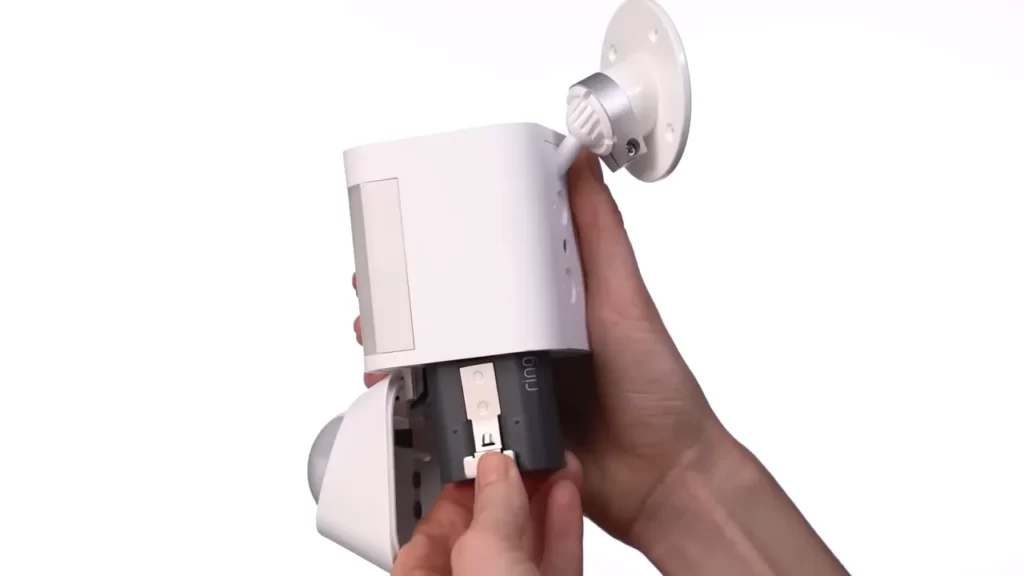
When setting up your Ring Camera, two crucial steps that should not be overlooked are charging the battery and securely mounting the camera. Properly completing these steps is essential to ensure your camera functions optimally and captures all the important moments you need.
Steps to charge the camera’s battery
- Step 1: Prepare the camera: Before charging the battery, make sure you have installed it correctly in the camera. Refer to the user manual for the specific steps to follow.
- Step 2: Connect the charger: Take the USB cable provided with your Ring Camera and plug it into the charging port on the camera. Ensure that the other end of the cable is connected to a power source, such as a wall socket or a USB port on your computer.
- Step 3: Monitor the charging process: Once the charger is plugged in, the camera’s battery icon will appear on the screen. Keep an eye on it to track the progress of the charging. It is recommended to charge the battery fully before proceeding to the next step.
- Step 4: Disconnect the charger: Once the battery is fully charged, disconnect the charger from both the camera and the power source. Your Ring Camera is now ready to be mounted and set up for use.
Instructions for securely mounting the camera
Mounting your Ring Camera securely is crucial to ensure optimal performance and coverage. Follow these instructions to securely mount your camera:
- Step 1: Select a suitable location: Identify an area where the camera can capture the desired viewing angle, ensuring it covers the intended surveillance area. Consider factors such as the height, accessibility, and potential obstructions.
- Step 2: Attach the mounting bracket: Using the provided screws and anchors, attach the mounting bracket to the selected surface securely. Make sure it is level and stable, allowing for easy adjustment and positioning.
- Step 3: Attach the camera: Depending on the camera model, carefully attach the camera onto the mounting bracket. Follow the instructions provided by Ring to ensure proper attachment and alignment.
- Step 4: Adjust the camera angle: Once the camera is attached, adjust its position and angle to best capture the intended surveillance area. Ensure that the camera is securely fastened in the desired position to prevent any changes caused by wind or vibrations.
- Step 5: Check the camera’s field of view: Before finalizing the installation, verify that the camera’s field of view is clear from any obstructions and includes the desired monitoring area.
- Step 6: Test the camera: Finally, test the camera by streaming the video feed through your Ring app. Ensure that the camera captures the desired footage and that its positioning offers the best coverage based on your needs and preferences.
By following these steps, you will be able to properly charge and mount your Ring Camera, allowing you to enjoy all the benefits and security it offers. Take the time to understand the instructions and ensure each step is done correctly to maximize your camera’s performance.
Connecting The Ring Camera To Your Wi-Fi Network
Installing a Ring Camera is a great way to enhance the security of your home or workplace. But to ensure it functions seamlessly, it’s crucial to connect it to your Wi-Fi network. In this section, we’ll guide you through the process of connecting your Ring Camera to your Wi-Fi using the Ring app. We’ll also cover troubleshooting common Wi-Fi connection issues that you might encounter along the way.
Utilizing the Ring app for Wi-Fi connection
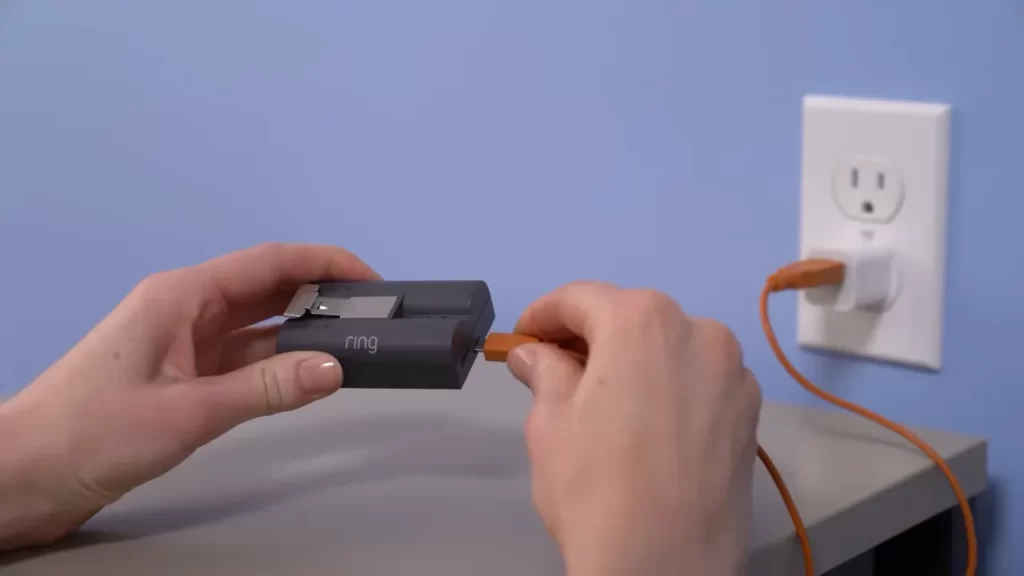
The Ring app is your key to a hassle-free Wi-Fi connection for your Ring Camera. Follow these simple steps to connect your camera successfully:
- Download the Ring app: Start by downloading the Ring app from the App Store or Google Play Store. Ensure that your smartphone is connected to the internet.
- Create an account: Open the app, tap on “Create Account,” and follow the instructions to create a new account. If you already have a Ring account, simply log in using your existing credentials.
- Add your device to the app: Once you’re logged in, tap on the “Add Device” button to initiate the setup process. Select “Camera” as the device type, and follow the on-screen instructions to proceed.
- Put your camera in setup mode: Depending on the model of your Ring Camera, you might need to press and hold the setup button located on the device for a few seconds. This will put the camera in setup mode, indicated by flashing lights or a spinning LED ring.
- Connect to your Wi-Fi network: In the Ring app, select your Wi-Fi network from the list of available networks. Enter your Wi-Fi password when prompted, and wait for the app to establish a connection between your camera and the network.
- Confirm successful connection: Once the Wi-Fi connection is established, the app will display a confirmation message. It’s always a good idea to test your camera’s live feed to ensure everything is working correctly.
Congratulations! You’ve successfully connected your Ring Camera to your Wi-Fi network using the Ring app. Now you can enjoy the peace of mind that comes with enhanced security and monitoring capabilities.
Troubleshooting common Wi-Fi connection issues
Sometimes, connecting your Ring Camera to your Wi-Fi network might not go as smoothly as planned. Here are a few troubleshooting steps you can take to resolve common Wi-Fi connection issues:
| Issue | Solution |
|---|---|
| Weak Wi-Fi signal | Ensure that your camera is within range of your Wi-Fi router. Consider repositioning your camera or investing in a Wi-Fi extender to improve signal strength. |
| Incorrect Wi-Fi password | Double-check that you have entered the correct Wi-Fi password during setup. It’s easy to make a mistake, especially if the password is long or complex. |
| Network congestion | If your Wi-Fi network is overloaded with devices or experiencing high traffic, your camera’s connection might be affected. Try disconnecting unnecessary devices or upgrading your internet plan. |
| Incompatible Wi-Fi encryption | Certain legacy network equipment may have compatibility issues with modern Wi-Fi encryption standards. If you suspect this to be the case, consider updating your router’s firmware or contacting your internet service provider for assistance. |
By following these troubleshooting steps, you should be able to resolve most Wi-Fi connection issues with your Ring Camera. Remember, a stable and secure connection is essential for the optimal performance of your camera, so it’s worth investing some time to ensure everything is set up correctly.
Activating The Camera And Pairing It With The App
Installing a Ring Camera in your home can bring a sense of security and peace of mind. However, before you can start enjoying the benefits of this innovative device, you need to activate it and pair it with the Ring app. By following a few simple steps, you’ll have your camera up and running in no time.
Steps to activate the camera through the Ring app
Activating your Ring camera is a straightforward process that can be completed through the Ring app. To do so, simply follow these steps:
- Launch the Ring app on your mobile device.
- Tap on the “Set Up a Device” option.
- Select “Security Cams” from the list of available devices.
- Choose the specific model of your Ring camera.
- Connect the camera to power by plugging it into an electrical outlet.
- On the Ring camera, press and release the orange button located on the back or the side.
- Wait for the camera’s light to start flashing, indicating that it’s ready to be paired.
- On the Ring app, tap “Continue” and follow the on-screen instructions to connect your camera to Wi-Fi.
- Once the camera is connected to Wi-Fi, give it a suitable name and select the location where it will be installed.
- Click on “Finish” to complete the activation process.
Pairing the camera with your mobile device
After successfully activating the camera, the next step is to pair it with your mobile device. This allows you to easily access and control the camera through the Ring app whenever and wherever you are. Here’s what you need to do:
- Open the Ring app on your mobile device.
- Tap on the “Devices” tab at the bottom of the screen.
- Select your Ring camera from the list of devices.
- Follow the on-screen instructions to pair your camera with your mobile device.
Once the camera is successfully paired, you’ll be able to view live footage, receive notifications, and access additional features offered by the Ring app.
By following these simple steps, you’ll have your Ring camera activated and paired with the app in no time. Enjoy the added security and convenience that this smart device brings to your home.
Adjusting Motion Detection And Privacy Settings
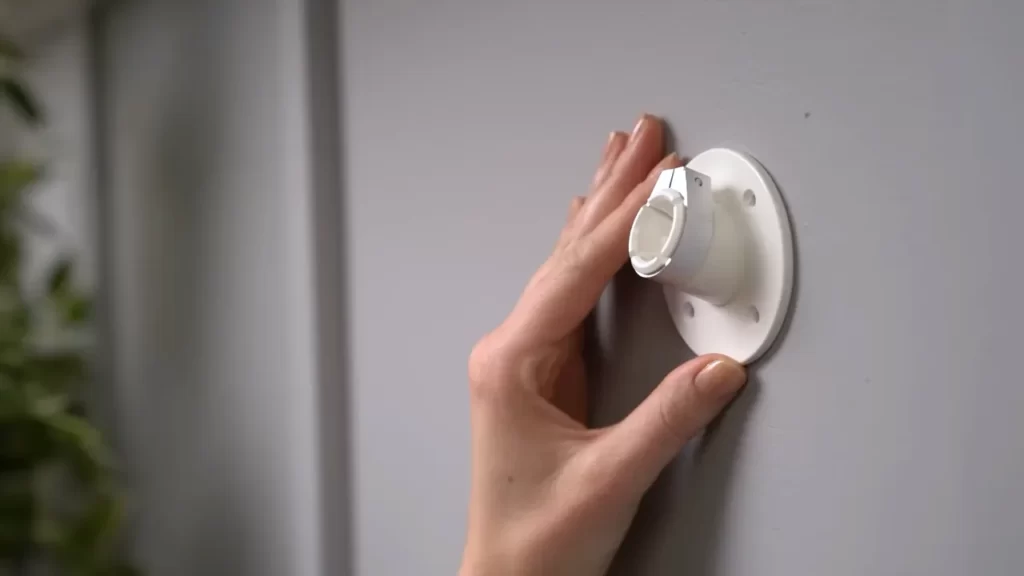
Adjusting Motion Detection and Privacy Settings When it comes to installing the Ring Camera, configuring motion detection and privacy settings is crucial to ensure that the camera works effectively while respecting your privacy. In this guide, we will walk you through the process of adjusting motion detection sensitivity levels and enhancing privacy with customizable zones.
Configuring Motion Detection Sensitivity Levels
To make sure your Ring Camera captures all important activities while reducing false alarms, you can adjust the motion detection sensitivity levels. Follow these steps to configure the motion detection sensitivity:
- Open the Ring mobile app and navigate to the device settings.
- Select the specific Ring Camera you want to adjust.
- Scroll down and find the “Motion Settings” or “Motion Sensitivity” option.
- Choose a sensitivity level that suits your needs. Keep in mind that higher sensitivity settings may detect even subtle movements, while lower settings might miss some events.
- Save your changes and test the motion detection by walking in front of the camera’s field of view.
By customizing the motion detection sensitivity levels, you can optimize the accuracy of capturing motion events without overwhelming yourself with unnecessary notifications.
Enhancing Privacy with Customizable Zones
Ring Camera offers customizable privacy zones that allow you to define specific areas where motion should be ignored. This feature is particularly useful when you want to exclude sensitive areas, such as windows facing a neighbor’s property or areas where pets frequently roam. Here’s how you can create customizable zones:
- Open the Ring mobile app and navigate to the device settings for the Ring Camera.
- Look for the “Privacy Settings” or “Privacy Zones” option.
- Select “Adjust Zones” or a similar option to view the camera’s field of view.
- Create a zone by tapping and dragging on the screen to enclose the desired area.
- Adjust the size and position of the zone according to your preferences.
- Repeat the previous steps to add multiple zones if needed.
- Save your changes and exit the settings.
With the customizable zones set up, the Ring Camera will disregard motion within those areas, protecting your privacy and reducing unnecessary alerts. In conclusion, adjusting motion detection and privacy settings on your Ring Camera is essential for a seamless and personalized security experience. By customizing the motion detection sensitivity levels and setting up privacy zones, you can ensure that your camera captures relevant events while maintaining your privacy.
Exploring Additional Features And Functionality
When it comes to installing the Ring Camera, there’s more to it than just setting it up and letting it do its thing. In this section, we’ll explore the additional features and functionality that the Ring Camera offers, taking your home security to the next level.
Utilizing two-way audio communication
One of the remarkable features of the Ring Camera is the ability to engage in two-way audio communication. This means you can not only see what’s happening around your property but also speak to anyone who comes within range of the camera. By utilizing this feature, you can actively deter trespassers or welcome guests outside your door, even if you’re not physically present.
Here’s how you can make the most of the two-way audio communication feature:
- Ensure that the camera has a stable internet connection, as this is crucial for seamless communication.
- Access the live view of the camera through the Ring app or your preferred device.
- To initiate two-way audio communication, simply tap the microphone icon on the app or device interface.
- Speak clearly and directly into the microphone to relay your message.
- Once you’re done speaking, release the microphone icon to listen to the response from the other end.
Integrating the camera with other smart home devices
Ring Camera offers seamless integration with various smart home devices, allowing you to enhance the security and convenience of your home. Integrating the camera with other devices such as door locks, lights, or motion sensors can provide a comprehensive home security system that works in harmony.
To integrate your Ring Camera with other smart home devices, follow these steps:
- Ensure that the devices you want to connect with the camera are compatible and have the necessary features for integration.
- Open the Ring app and navigate to the camera settings.
- Look for the “Smart Home” or “Integrations” option and select it.
- Follow the on-screen prompts to add and connect your desired smart home devices.
- Once connected, you can enjoy the convenience of controlling multiple devices from a single platform.
By integrating the Ring Camera with other smart home devices, you can, for example, have the camera automatically turn on the outdoor lights when motion is detected, or lock the doors when you arm the camera. This level of automation enhances both the security and convenience of your home, giving you peace of mind.
Regular Cleaning And Upkeep
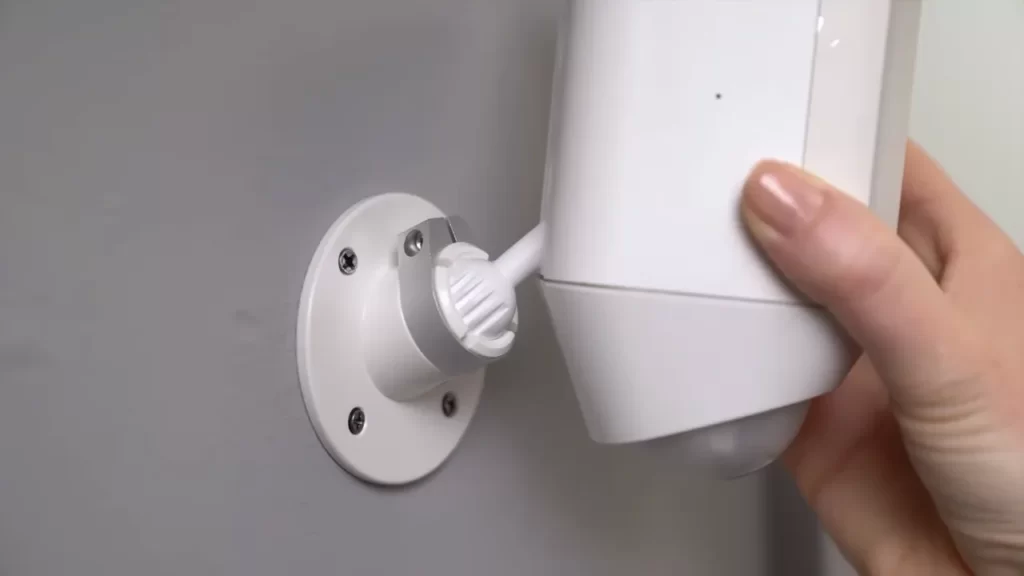
Regular cleaning and upkeep of your Ring camera is essential to ensure long-lasting performance and optimal functionality. By following these simple steps, you can keep your camera in top condition, ensuring maximum visibility and protection against weather elements.
Cleaning the camera lens for maximum visibility
Over time, dust, dirt, and debris can accumulate on the camera lens, obstructing the view and reducing the clarity of the footage. To maintain maximum visibility, it is important to clean the camera lens regularly. Follow these steps:
- Gently remove the camera cover using a screwdriver or the provided tool.
- Using a microfiber cloth or a soft lint-free cloth, wipe the lens to remove any dirt or smudges. Avoid using abrasive cleaners or materials that may scratch the lens.
- For stubborn stains or fingerprints, dampen the cloth with a small amount of lens cleaner or water. Make sure the cloth is not dripping wet to avoid any liquid seeping into the camera.
- Gently wipe the lens in a circular motion until it is clean and clear.
- Once the lens is clean, place the camera cover back securely.
Preventing damage to the camera from weather elements
Ring cameras are designed to withstand various weather conditions; however, taking preventive measures can significantly extend their lifespan. Follow these tips to protect your camera from weather elements:
- Choose an appropriate location for the camera installation. Avoid areas exposed to direct sunlight, as prolonged exposure can cause overheating and damage the internal components. Similarly, avoid installing the camera in areas where it may be exposed to heavy rain or snowfall.
- Regularly inspect the camera housing for any signs of wear or damage. Cracks or gaps can allow moisture to enter and damage the camera. If you notice any issues, consider contacting Ring support for assistance.
- In regions with extreme weather conditions, consider using additional protective accessories, such as a weatherproof cover or a sunshade, to shield the camera from direct sunlight and rain.
- During heavy storms or harsh weather conditions, it is advisable to temporarily disable any motion detection alerts to prevent false alarms. Simply access the Ring app and adjust the settings accordingly.
By staying proactive with regular cleaning and taking precautions against weather elements, you can ensure the longevity and optimal performance of your Ring camera, providing you with peace of mind and enhanced security for your home.
Common Troubleshooting Tips And Solutions
Addressing Connectivity Issues
One common issue users may encounter when installing the Ring Camera is connectivity problems. Here are some troubleshooting tips to help address these issues:
- Check your Wi-Fi signal strength: Ensure that your Ring Camera is within range of a strong Wi-Fi signal. If the camera is placed too far from the router, it may experience connectivity issues. Consider moving the camera closer to the router or installing a Wi-Fi extender.
- Restart your router: Sometimes, a simple restart of your router can resolve connectivity problems. Unplug your router, wait for a few seconds, and then plug it back in. This can help refresh the Wi-Fi connection and resolve any minor issues.
- Review your network settings: Double-check your network settings to ensure that your Ring Camera is connected to the correct Wi-Fi network. Make sure you are using the correct network name (SSID) and password. Additionally, verify that your router is not blocking any ports or protocols that may be necessary for the camera’s operation.
- Reduce interference: Nearby electronic devices, such as cordless phones or microwave ovens, can cause interference with your Wi-Fi signal. Try moving these devices away from your Ring Camera or your router to minimize any potential interference.
Resolving Camera Performance or App-Related Problems
If you are experiencing camera performance or app-related problems with your Ring Camera, follow these troubleshooting steps to fix the issue:
- Check for firmware updates: Ensure that your Ring Camera is running the latest firmware version. Firmware updates often include bug fixes and performance improvements that can address common issues. Open the Ring app on your smartphone, go to the device settings, and check for any available updates.
- Power cycle the camera: Sometimes, a simple power cycle can resolve performance problems. Disconnect the camera from its power source, wait for a few seconds, and then reconnect it. This can help refresh the camera’s system and clear any temporary glitches.
- Clear cache and data: If you are experiencing app-related issues, clearing the cache and data of the Ring app can help. Go to your device’s settings, find the Ring app, and clear its cache and data. This will remove any temporary files or settings that may be causing problems.
- Reinstall the app: If clearing the cache and data didn’t resolve the issue, try uninstalling and reinstalling the Ring app. This will ensure that you have the latest version of the app and can fix any corrupted files that may be causing problems.
If you have followed these troubleshooting tips and are still experiencing issues with your Ring Camera, it may be beneficial to reach out to Ring’s customer support for further assistance. They can provide additional guidance and help diagnose any underlying issues with your camera or network setup.
Firmware Updates And Ring Camera Software
Introduction:
When it comes to installing your Ring Camera, it’s essential not to overlook the importance of firmware updates and the Ring Camera software. Keeping your camera software up to date ensures that you have the latest features, bug fixes, and security enhancements. In this section, we will delve into the significance of staying current with firmware updates and guide you through the process of updating the camera software through the Ring app.
Importance of keeping the camera firmware up to date:
Updating the camera firmware plays a crucial role in enhancing the performance and security of your Ring Camera. Ring constantly works on improving their products, and firmware updates offer you the opportunity to benefit from these enhancements. Here are some reasons why it’s vital to keep your camera firmware up to date:
- Security patches and fixes: Firmware updates frequently include security patches that address vulnerabilities and protect your camera from potential threats. By ensuring your camera’s firmware is up to date, you can have peace of mind knowing that your home security system is equipped with the latest defenses.
- Improved features and functionality: Ring often introduces new features and functionalities through firmware updates. These updates can unlock additional capabilities or improve the overall performance of your camera, enhancing your user experience.
- Bug fixes and stability improvements: Firmware updates also address any known issues or bugs that may affect the performance of your camera. By regularly updating the firmware, you can remedy any existing problems or glitches and enjoy a more stable and reliable camera.
Instructions for updating the camera software through the app:
Updating the camera software through the Ring app is a straightforward process. Follow these easy steps to ensure your camera firmware is always up to date:
- Open the Ring app on your mobile device.
- Navigate to the dashboard and select the camera you want to update.
- Tap on the settings icon, typically represented by a gear or cogwheel.
- Scroll down and look for the “Device Health” option. Tap on it.
- Under the device health section, you will find the “Firmware” option.
- If a firmware update is available, you will see an “Update Firmware” button. Tap on it to start the update process.
- Wait for the update to complete. This may take a few minutes, so it’s important not to interrupt the process.
- Once the update is finished, your camera will restart, and you will have the latest firmware installed.
By following these steps and regularly checking for firmware updates through the Ring app, you can ensure that your Ring Camera is always running the latest software version, providing you with optimal performance and security.
Frequently Asked Questions On How To Install The Ring Camera
Can I Install Ring Camera Myself?
Yes, you can easily install a Ring camera by following the provided instructions. It’s a simple and straightforward process that you can do yourself without any professional help.
Is Ring Security Camera Easy To Install?
Yes, the Ring security camera is easy to install. Its simple setup process allows users to quickly and effortlessly install and start using the camera for their home security needs.
How Do You Install An Outdoor Ring Camera?
To install an outdoor Ring camera, follow these steps: 1. Choose a suitable location for the camera based on your security needs. 2. Ensure that the camera is within range of your Wi-Fi network. 3. Download and install the Ring app on your smartphone or tablet.
4. Follow the instructions in the app to set up your camera and connect it to your Wi-Fi network. 5. Mount the camera securely using the provided bracket and screws.
What Do You Need To Set Up A Ring Camera System?
To set up a Ring camera system, you will need the following: a Ring camera device, a stable internet connection, the Ring app installed on your smartphone or tablet, and a Ring account. Once you have these, you can easily set up and use your Ring camera system.
How Do I Install The Ring Camera?
To install the Ring camera, first choose a suitable location, install the mounting bracket, and then attach the camera to it securely.
Conclusion
Installing the Ring Camera is a simple process that can enhance your home security. By following the step-by-step instructions provided, you can easily set up the camera and start monitoring your property. With its user-friendly features, the Ring Camera offers convenience and peace of mind.
Keep your loved ones safe by taking advantage of this effective security solution.
